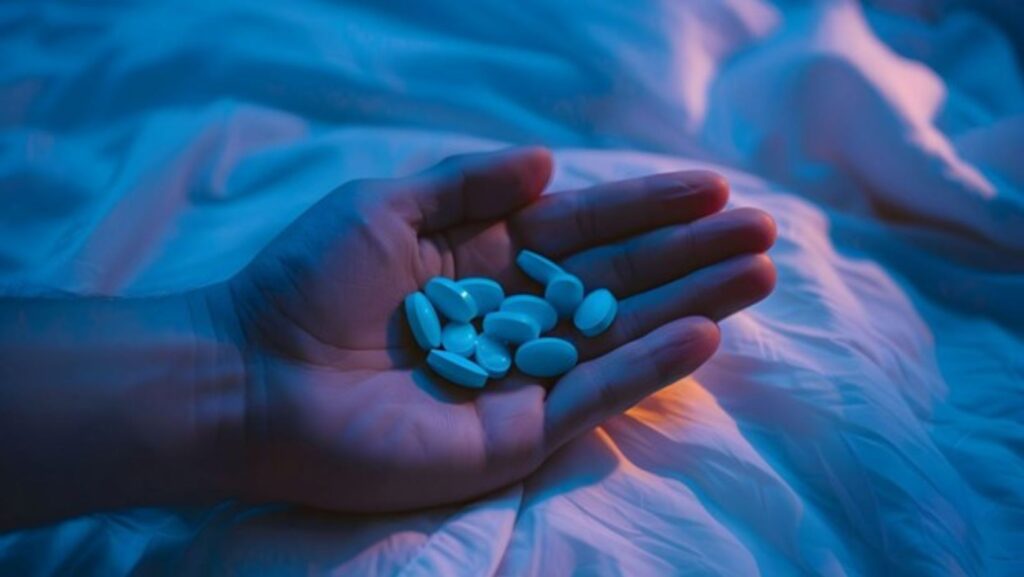The term Blues drug often refers to counterfeit prescription pills, particularly those laced with dangerous substances such as fentanyl. These pills, typically blue in color, resemble popular medications like oxycodone or Percocet. However, their composition is unpredictable and highly potent, posing a significant threat to both physical and mental health. As their use grows, the impact on mental health is becoming more evident, underscoring the need for greater awareness and intervention.
Understanding the Blues Drug
The rise of the Blues drug stems largely from its deceptive appearance. People who seek prescription medications may unknowingly purchase these counterfeit pills, which are laced with substances like fentanyl, methamphetamine, or other illicit drugs. Fentanyl, a synthetic opioid 50-100 times more potent than morphine, is particularly dangerous. Even small amounts can lead to overdose and death.
Given the potency of the substances in these counterfeit pills, users often experience extreme physiological effects. The unpredictability of the drug’s composition adds to its danger, causing rapid, intense highs followed by severe crashes. These effects contribute significantly to the mental health toll on individuals who use the drug, whether knowingly or unknowingly.
The Mental Health Toll of the Blues Drug
The mental health impact of using Blues drugs is profound. Substance abuse, especially involving drugs laced with potent opioids like fentanyl, leads to significant changes in brain chemistry. Users experience extreme highs, but these are often followed by periods of depression, anxiety, and mood instability. The cyclical nature of substance use—chasing the high, experiencing withdrawal, and repeating the process—creates a mental and emotional rollercoaster.

1. Anxiety and Paranoia: One of the most common effects users report is intense anxiety, particularly during the “come down” phase after using the drug. The high from the Blues drug may initially mask these feelings, but as the effects wear off, users often experience a spike in anxious thoughts. Paranoia is another troubling effect, making individuals feel distrustful, even of those close to them, leading to further isolation.
2. Depression: Opioid misuse, particularly when mixed with other substances, can lead to severe depression. As the brain becomes dependent on these substances for dopamine release (the chemical responsible for feelings of pleasure), normal activities that used to bring joy become less rewarding. This creates a cycle of depression, where the user becomes trapped in the pursuit of temporary relief through more drug use.
3. Cognitive Decline: Long-term use of counterfeit pills like the Blues drug can impair cognitive function. Memory, concentration, and decision-making abilities deteriorate as brain cells are damaged or rewired due to constant exposure to powerful substances. This cognitive decline often exacerbates the mental health conditions individuals face, making it harder for them to break the cycle of abuse.
Co-occurring Disorders: A Dual Challenge
Many individuals who use drugs like the Blues are also dealing with underlying mental health issues. Conditions like anxiety, depression, and post-traumatic stress disorder (PTSD) often drive people to seek out substances that provide temporary relief. Unfortunately, this creates a dangerous feedback loop: mental health issues lead to substance abuse, which in turn worsens the original condition.
Dual diagnosis, or the presence of both a mental health disorder and substance use disorder, complicates treatment. Traditional approaches that focus solely on one issue may not address the root causes or the interconnected nature of these conditions. Treatment needs to be comprehensive, addressing both the mental health and substance abuse components simultaneously for the best chance of recovery.
The Role of Addiction and Withdrawal
One of the reasons the Blues drug is so harmful is the speed at which addiction can develop. The fentanyl or other opioids present in the counterfeit pills rapidly bind to opioid receptors in the brain, leading to a quick and powerful high. This intense rush is highly addictive, as users become conditioned to seek the euphoric feeling repeatedly.
Once addicted, users experience severe withdrawal symptoms when they stop taking the drug. These symptoms can include nausea, vomiting, body aches, insomnia, and extreme agitation. The discomfort of withdrawal drives many users to continue taking the drug, often in larger and more dangerous amounts, to avoid the painful withdrawal process. This vicious cycle contributes to the growing mental health crisis surrounding opioid misuse.
Path to Recovery
Recovery from Blues drug addiction requires a multi-faceted approach. Detoxification under medical supervision is often the first step, allowing individuals to safely withdraw from the drug. Medication-assisted treatment (MAT), using drugs like methadone or buprenorphine, can help manage withdrawal symptoms and reduce cravings.

Equally important is addressing the mental health challenges that arise from drug use. Counseling and therapy, particularly cognitive-behavioral therapy (CBT) and dialectical behavior therapy (DBT) can help individuals manage anxiety, depression, and other co-occurring mental health disorders. These therapies focus on developing healthier coping mechanisms and breaking the cycle of substance dependency.
Support groups, such as Narcotics Anonymous (NA), can provide a sense of community and accountability, helping individuals stay on the path to sobriety. Long-term recovery is a lifelong commitment, requiring ongoing mental health support and coping strategies to avoid relapse.
Conclusion
The impact of the Blues drug on mental health is far-reaching, affecting individuals’ emotional well-being, cognitive function, and overall mental state. As counterfeit pills like these continue to circulate, it’s essential to raise awareness about their dangers and provide resources for those struggling with addiction. Comprehensive treatment, addressing both substance use and mental health, is key to overcoming the challenges posed by the Blues drug and finding a path to lasting recovery.
